I want these lines to be visible on a regular map in such a way where each square represents 1x1m.
I looked into MKTileOverlay but didn't find too much about it. Is it possible to show the gridline on the map as well as change the color?
I want these lines to be visible on a regular map in such a way where each square represents 1x1m.
I looked into MKTileOverlay but didn't find too much about it. Is it possible to show the gridline on the map as well as change the color?
I've done something very similar for an app I've been playing around with. Mine is for putting a coloured grid over a map so that there are 15 columns and rows in a square mile around a home location, so you'll need to adjust the calculations for your distances but the same general approach should work. The app is only a prototype at the moment, and hasnt been optimised (could refactor code out of viewDidLoad for a start!), but the code should be good enough to get you started.
var homeLocation: CLLocationCoordinate2D!
let metresPerMile = 1609.344
var degPerHorizEdge: Double!
var degPerVertEdge: Double!
override func viewDidLoad() {
homeLocation = CLLocationCoordinate2D(latitude: 53.7011, longitude: -2.1071)
let hd = CLLocation(latitude: homeLocation.latitude, longitude: homeLocation.longitude).distance(from: CLLocation(latitude: homeLocation.latitude + 1, longitude: homeLocation.longitude))
let vd = CLLocation(latitude: homeLocation.latitude, longitude: homeLocation.longitude).distance(from: CLLocation(latitude: homeLocation.latitude, longitude: homeLocation.longitude + 1))
let degPerHMile = 1 / (hd / metresPerMile)
let degPerVMile = 1 / (vd / metresPerMile)
degPerHorizEdge = degPerHMile / 15
degPerVertEdge = degPerVMile / 15
super.viewDidLoad()
let gridController = GridController(for: gameID!)
gridController.delegate = self
let mapSize = CLLocationDistance(1.2 * metresPerMile)
let region = MKCoordinateRegion(center: homeLocation, latitudinalMeters: mapSize, longitudinalMeters: mapSize)
mapView.delegate = self
mapView.showsUserLocation = true
mapView.showsBuildings = true
mapView.mapType = .standard
mapView.setRegion(region, animated: true)
}
override func viewDidAppear(_ animated: Bool) {
super.viewDidAppear(animated)
if let overlays = prepareOverlays() {
mapView.addOverlays(overlays)
}
}
func prepareOverlays() -> [MKPolygon]? {
let topLeft = CLLocationCoordinate2D(latitude: homeLocation.latitude - 7.5 * degPerHorizEdge, longitude: homeLocation.longitude - degPerVertEdge * 7.5)
var overlays = [MKPolygon]()
var locations = [CLLocationCoordinate2D]()
for y in 0...14 {
for x in 0...14 {
locations.append(CLLocationCoordinate2D(latitude: topLeft.latitude + Double(x) * degPerHorizEdge, longitude: topLeft.longitude + Double(y) * degPerVertEdge))
}
}
for coord in locations.enumerated() {
let location = coord.element
var corners = [location, //has to be a var due to using pointer in next line
CLLocationCoordinate2D(latitude: location.latitude + degPerHorizEdge, longitude: location.longitude),
CLLocationCoordinate2D(latitude: location.latitude + degPerHorizEdge, longitude: location.longitude + degPerVertEdge),
CLLocationCoordinate2D(latitude: location.latitude, longitude: location.longitude + degPerVertEdge)]
let overlay = MKPolygon(coordinates: &corners, count: 4)
overlay.title = "\(coord.offset)"
overlays.append(overlay)
}
return overlays.count > 0 ? overlays : ni
}
//MARK:- MKMapViewDelegate
extension MapViewController: MKMapViewDelegate {
func mapView(_ mapView: MKMapView, rendererFor overlay: MKOverlay) -> MKOverlayRenderer {
// overlay is a WSW zone
if let polygon = overlay as? MKPolygon {
let renderer = MKPolygonRenderer(polygon: polygon)
renderer.strokeColor = UIColor.gray.withAlphaComponent(0.4)
renderer.fillColor = UIColor.orange.withAlphaComponent(0.5)
renderer.lineWidth = 2
return renderer
}
// overlay is a line segment from the run (only remaining overlay type)
else {
let renderer = MKPolylineRenderer(polyline: overlay as! MKPolyline)
renderer.strokeColor = UIColor.blue.withAlphaComponent(0.8)
renderer.lineWidth = 3
return renderer
}
}
}